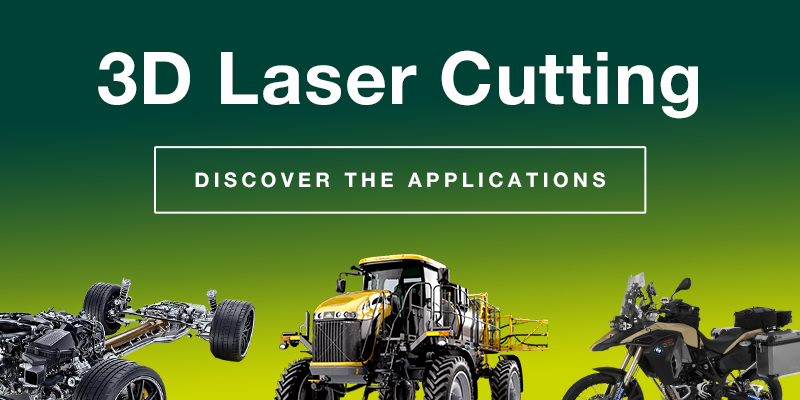3D laser cutting systems are becoming widespread in a growing variety of industries and applications: automotive, aerospace, industrial vehicles, motorcycles and other various systems.
Why use robotic handling in 3D laser cutting
Part repositioning occurs every time geometries to be cut cannot be reached in a single positioning.
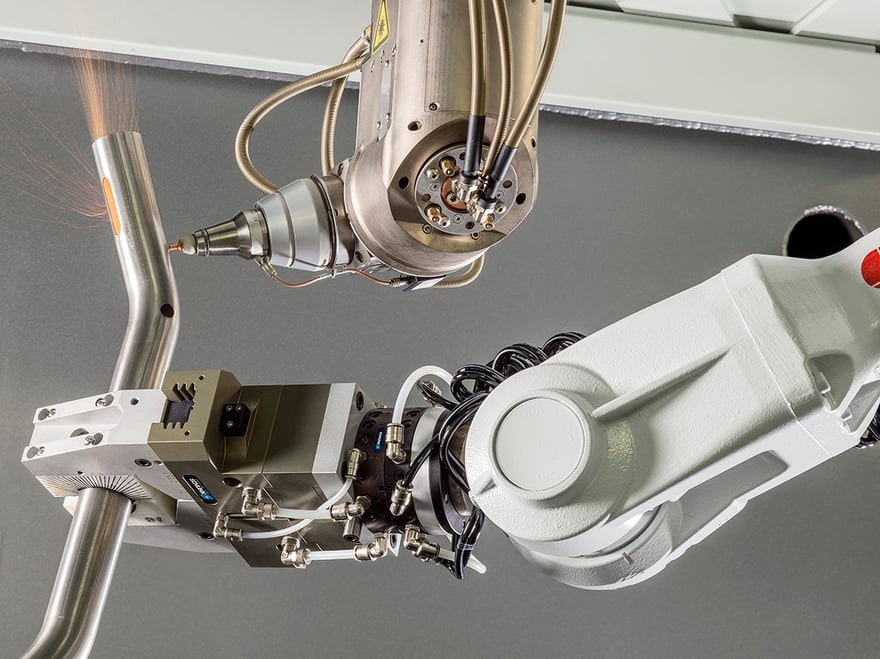 Example of robotic handling in 3D laser cutting.
Example of robotic handling in 3D laser cutting.
While this type of need is quite rare for deep-drawn or molded parts, it is almost always the case for 3D laser cutting of hydroformed or bent tubes, where trimming, piercing or cutting of geometries along the diameter of the bent tube or on opposite faces of the hydroformed part involve changing the cutting position of the part, also several times, during the same work cycle.
In this type of application, using a robot plays an essential role and brings considerable advantages both in terms of quality and of quantity:
- Better accuracy: with manual repositioning it’s likely for an error to occur, minor or major and entirely unpredictable, but this is not the case with a robot. As a matter of fact, use of a robot ensures repeatability and therefore greatly improves final processing accuracy.
- Improved productivity: when using a robot for repositioning, movement from one cutting position to the other takes place quickly and efficiently, without the need to interrupt the work process to open the doors and reposition the part manually. This not only speeds up the work cycle, but also simplifies the cycle time calculation and reduces the estimation time.
- Greater feasibility: Using the robot to manipulate increases the number of the possible part configurations with respect to the cutting head, thus allowing the laser to reach the most difficult areas of the workpiece and increase the number of feasible parts.
- Greater flexibility: unlike the part fixture that usually makes wide surface areas inaccessible, the robot gripper has a small clamping area so that almost the whole surface becomes accessible during the same cutting cycle.
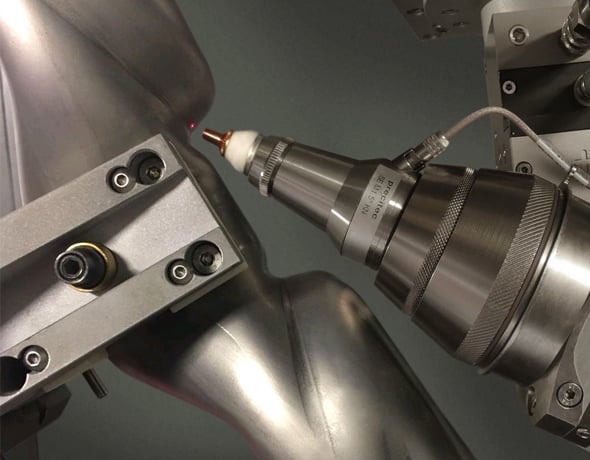 3D laser cutting of hydroformed tube.
3D laser cutting of hydroformed tube.
Programming the robot, an aspect not to be underestimated
In a 3D laser cutting system that uses the robot to manipulate the workpiece, it is important that the work cycle programming CAM software also manages the robot movements. The robot must be fully integrated in the system, not only mechanically, but also at software level to allow the entire work cycle to be programmed offline.
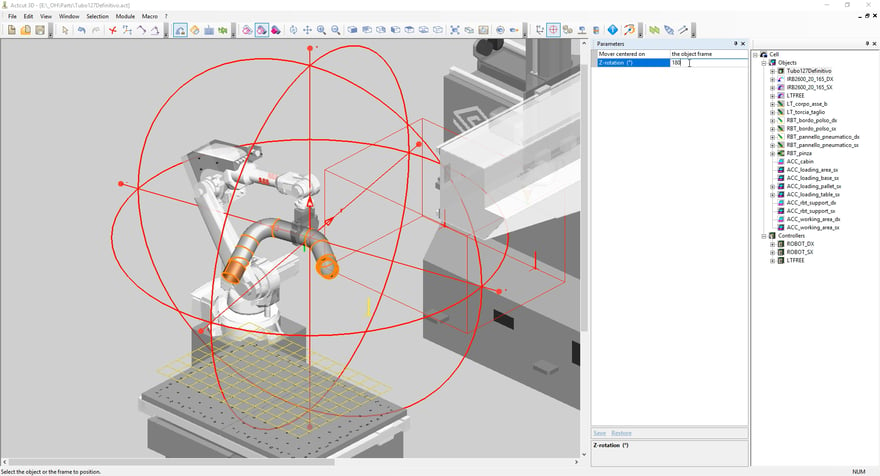 Handling robot programming in ArtCut
Handling robot programming in ArtCut
The operator only needs to program the CAM software and the entire system is programmed. It is not necessary for the operator to know how to program the robot or to have experience how to program a specific robot model (ABB, KUKA, etc.).
This is why it is important to choose a system with a CAM software able to program the entire work cell: laser head, robot and other equipment that make up the 3D laser cutting system.
Robotic laser cutting or 5-axis laser cutting: what are the differences?
3D laser cutting means that the head can cut the part a non-perpendicular direction to its surface. This may happen on metal sheets, straight tubes as well as on three-dimensional profiles of any type: deep-drawn, bent tubes, hydroformed, molded, etc.
5 axes are essential for this type of process and in the 3D laser cutting system:
- 3 axes are generally located in a basic Cartesian system X, Y, Z to move the head in space;
- 2 axes are next to the cutting head and are used to orientate correctly the beam direction.
With a robotic laser cutting system there are 6 robot axes on which the cutting head is installed and the seventh axis that allows the nozzle to approach and move away from the workpiece.
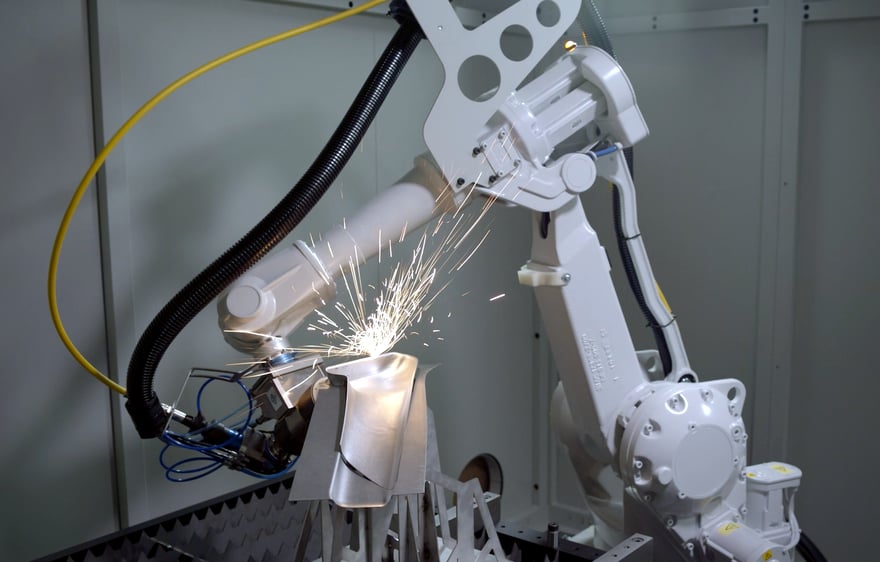 Robotic laser cutting on a deep-drawn part.
Robotic laser cutting on a deep-drawn part.
Even if both types of systems have been developed for the same purpose, laser cutting of three-dimensional parts has important differences that you should be aware of to make an informed choice:
Work Envelop
The work envelop of a 5-axis laser cutting system versus a laser cutting system with robot have completely different shapes.
5-axis laser cutting systems have a work envelop with a cuboid shape, whereas robotic laser cutting systems have a work envelop with a shape similar to an ellipsoid.
Degree of freedom
Degree of freedom means the freedom of movement that the system offers to the laser head. This is an important feature that directly affects part feasibility and productivity of the system itself.
The degree of freedom of a 3D laser cutting system is linked to the number of axes, which gives it a greater degree of freedom compared to the 5-axis laser cutting systems.
For example, in a robotic 3D laser cutting system, the 6 axes allow the head to cut in vertical position in both directions.
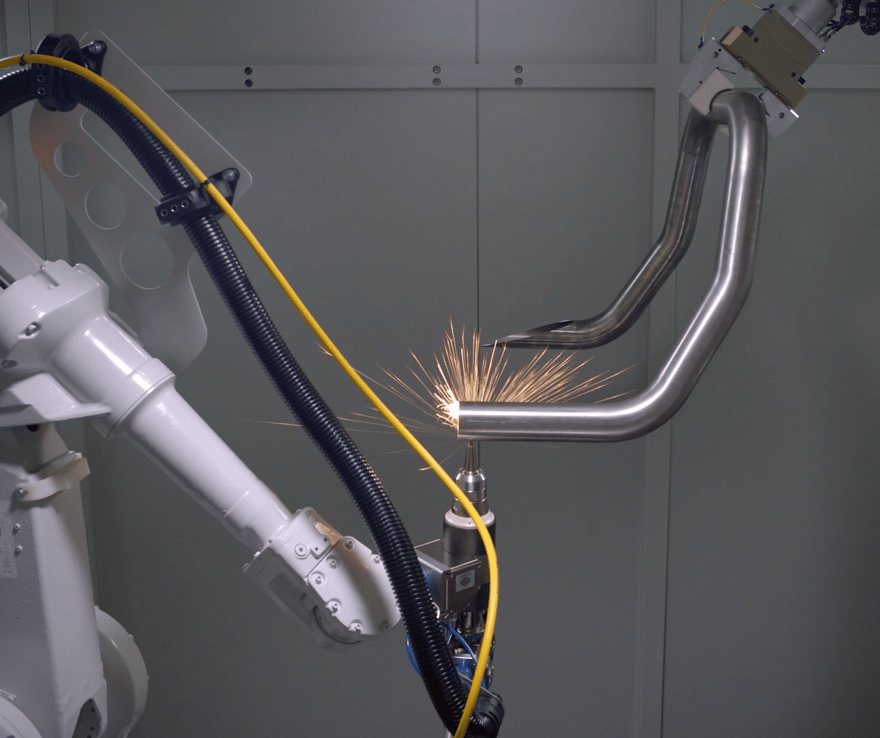 In a robotic 3D laser cutting system, the 6 axes allow the head to cut in vertical position in both directions.
In a robotic 3D laser cutting system, the 6 axes allow the head to cut in vertical position in both directions.
However, it should be noted that the use of a robot to move the workpiece greatly increases the degree of freedom, so in these terms, the difference between 5 or 6 axes is nearly zero.
Accuracy and repeatability
There is really no difference between the quality of a part processed on a 5-axis laser cutting system versus 3D robotic laser cutting system. Both types of systems provide superior results. However, when it comes down to accuracy, the 5-axis laser cutter produces slightly better results due to the Cartesian motion configuration.
For comparison, accuracy and repeatability values of a 5-axis laser cutting system and of a 3D laser cutting system with robot are shown below.
| 5-axis laser cutting | Robot laser cutting | |
| Accuracy | ± 0.05 mm (.002”) | ± 0.15 mm (.006”) |
| Repeatability | ± 0.05 mm (.002”) | ± 0.05 mm (.002”) |
Amount of the investment
The cost of laser cutting systems similar to those so far described can vary greatly. The variance is highly dependent on the level of automation, the technologies implemented in the machine, and if the machine is or is not a custom solution.
5-axis laser cutting systems
These are actual stand-alone machines and their cost may vary from about 500,000 € (around 540,000 $) to 1,000,000 € (around 1,080,000 $). Even if a 5-axis handling system is more expensive than a 3D robotic laser system, there are “standard” systems with standardized configurations available at reasonable price point.
Custom robot laser cutting systems
Custom machines are integrated from standard modules, however depending on the amount of customization, the price can be significantly higher and delivery times longer when compared to standard solutions. A company should consider the time required for design, integration, and testing to determine if a customized solution is right for their manufacturing needs.
Some of these systems, for example, can have more than one robot equipped with a laser cutting head. In this case, the price can easily reach above a million euro.
Compact 3D robot laser cutting system
As a pioneering technology, 3D laser cutting attracts many manufacturers that want to implement state of the art technology into their production.
In order to guarantee the high level of flexibility and versatility of a standard machine (the total control from a single point, offline programming, CAM software, etc.) and avoid the cost for customization in term of money and time, some machine tool producers have created compact and standardized 3D robot laser cutting systems.
Standardized solutions offer a number of benefits because a machine tool producer understands many of the challenges manufacturers encounter on a day-to-day basis. As a result, their machine solutions include features and functions that streamline the manufacturing process, allowing the user to program offline and start the production quickly. Manufacturing is more flexible, efficient, easier, and faster. Also, spare part availability and service response is better. A standard solution means service staff are trained and prepared to support you as needed and parts are stocked.
Standard solution also mean that it can be less expensive to produce. The price can generally range from 300.000 € (around 320,000 $) to 500.000 € (around 540,000 $).
This kind of solution can represent an advantageous way to step into the world of the 3D laser cutting with a limited investment and with a machine featuring the experience and the technology of a CNC laser cutting system.



